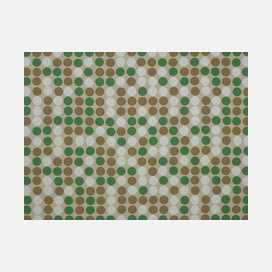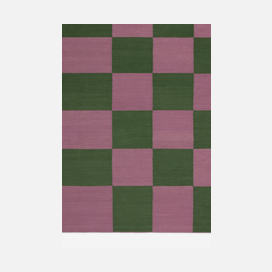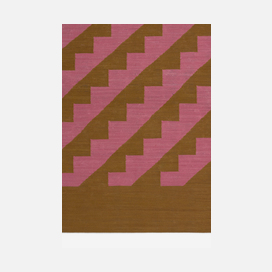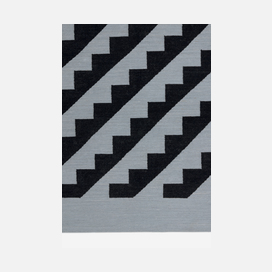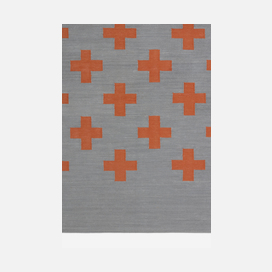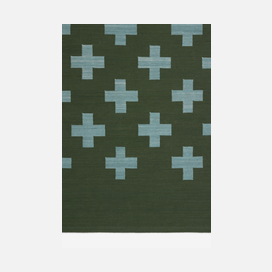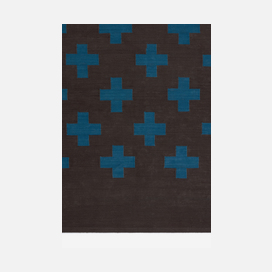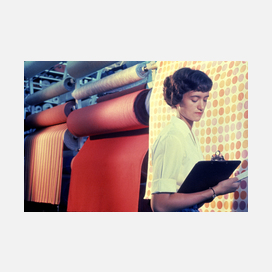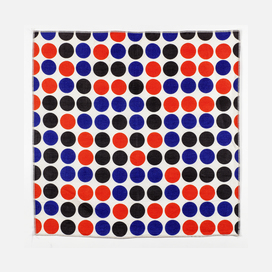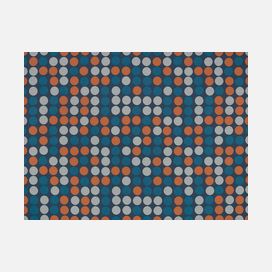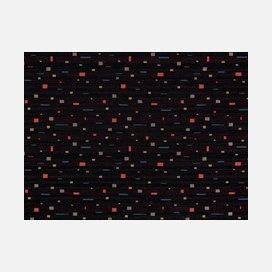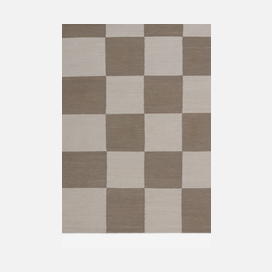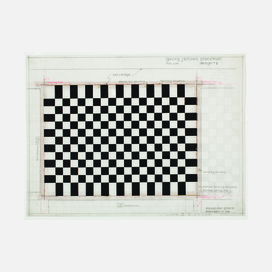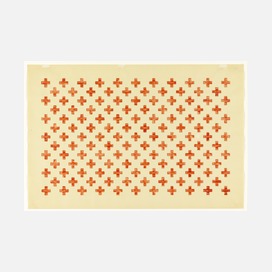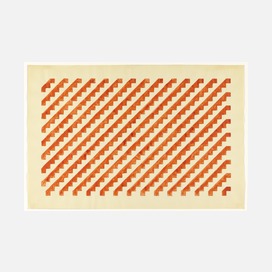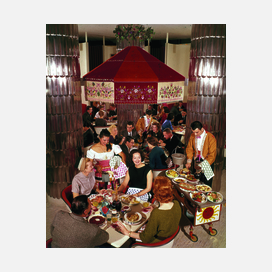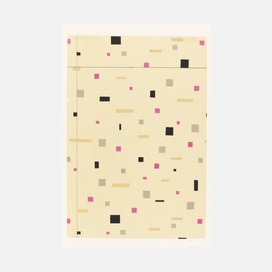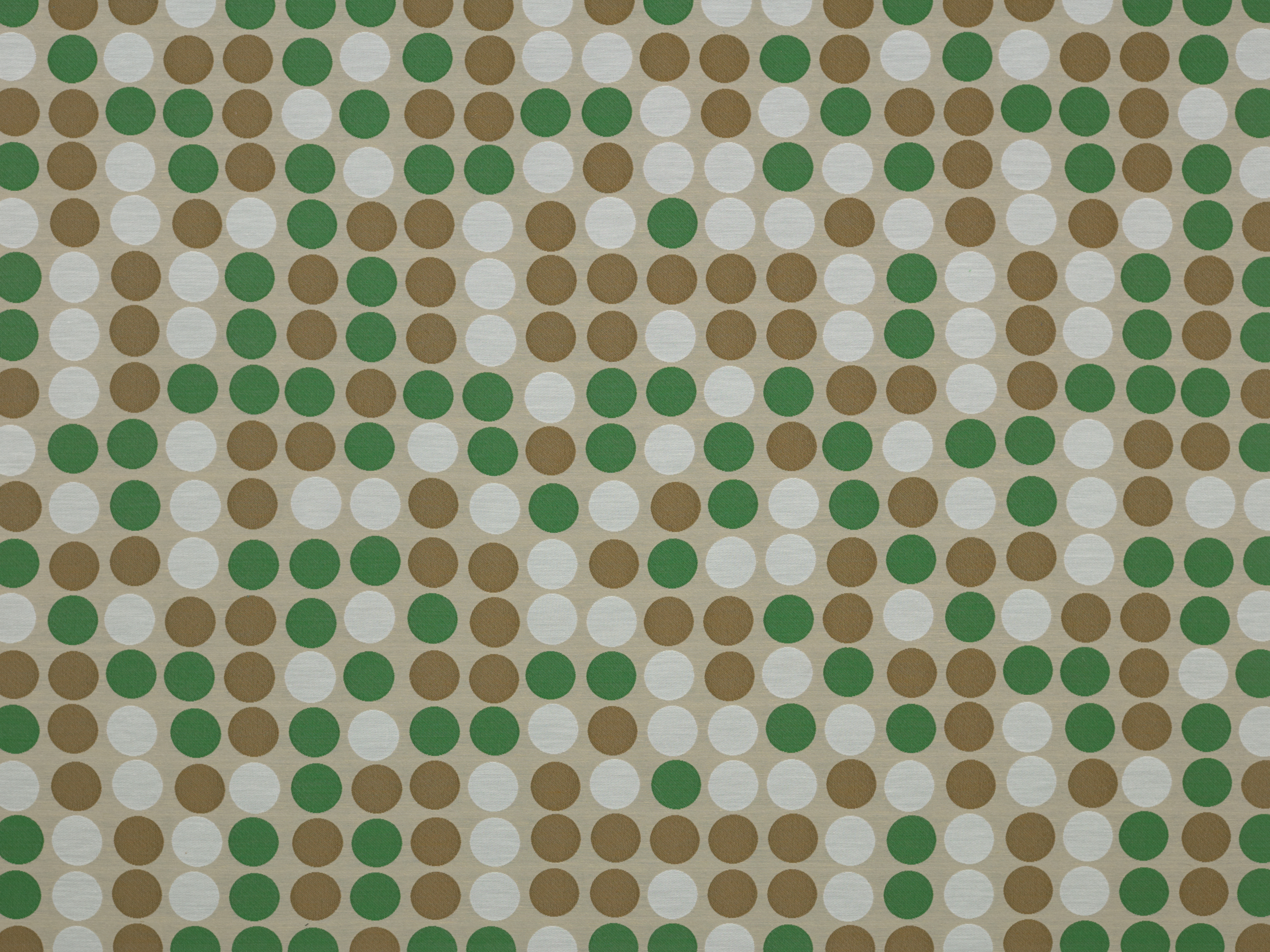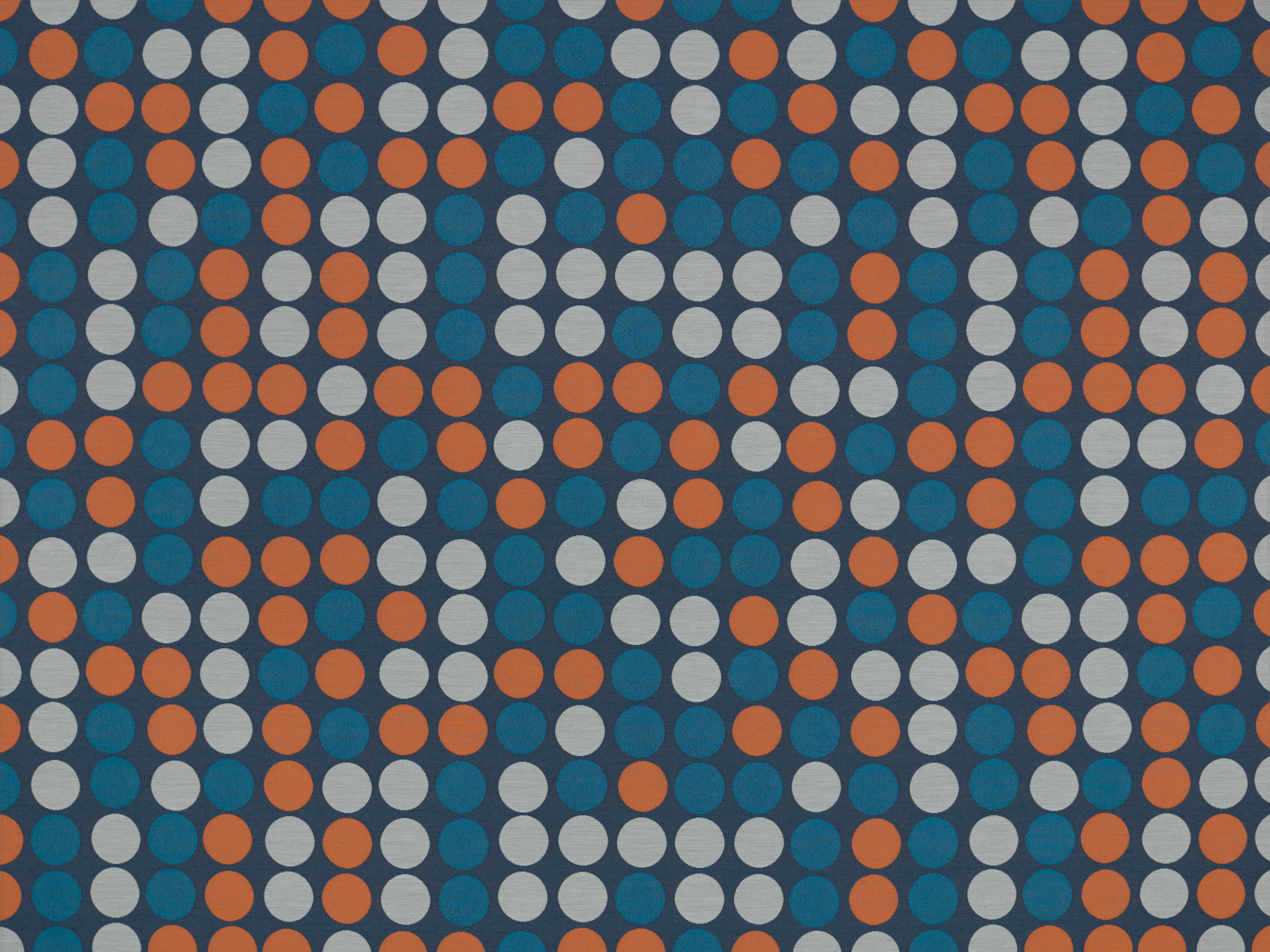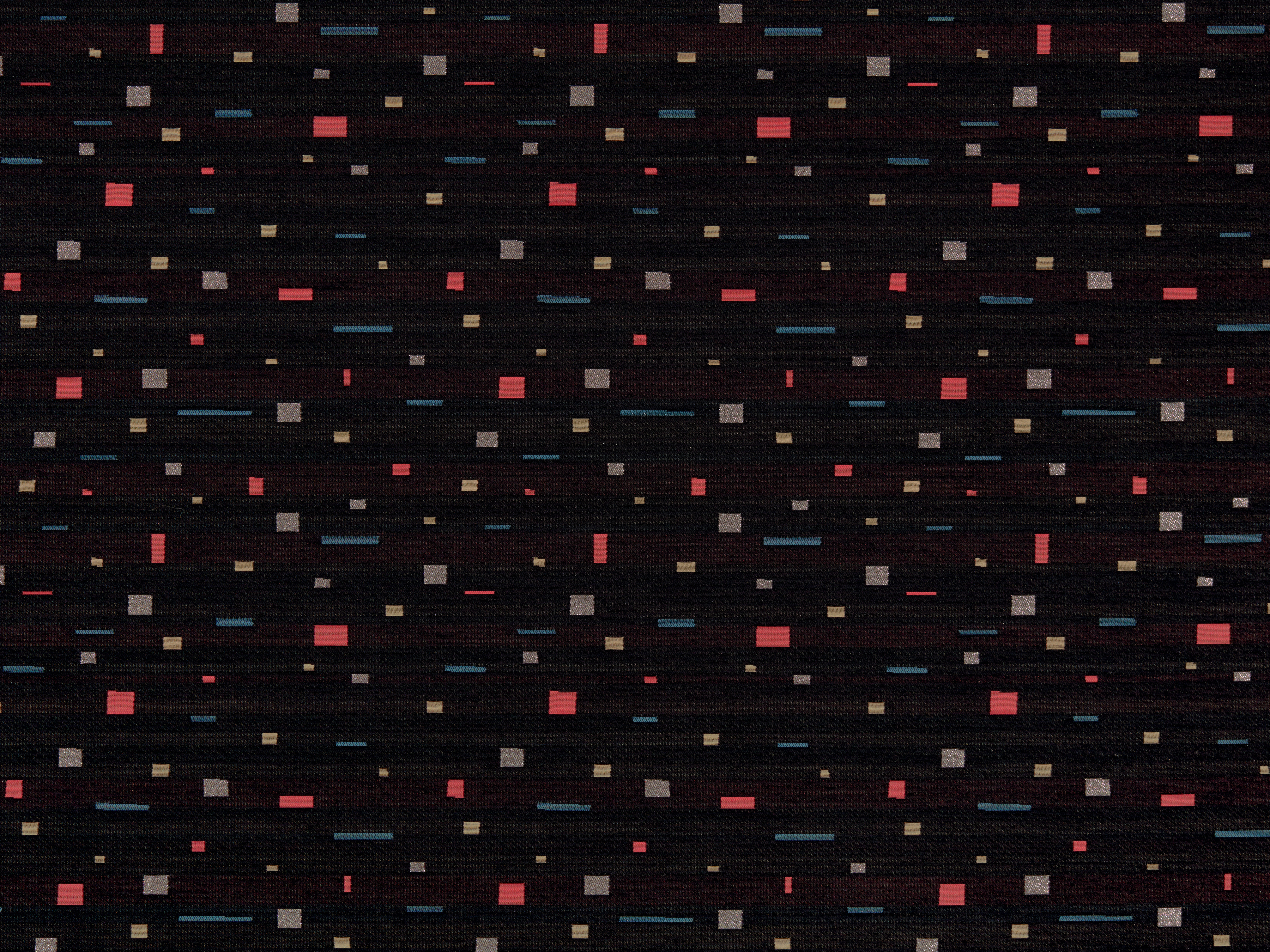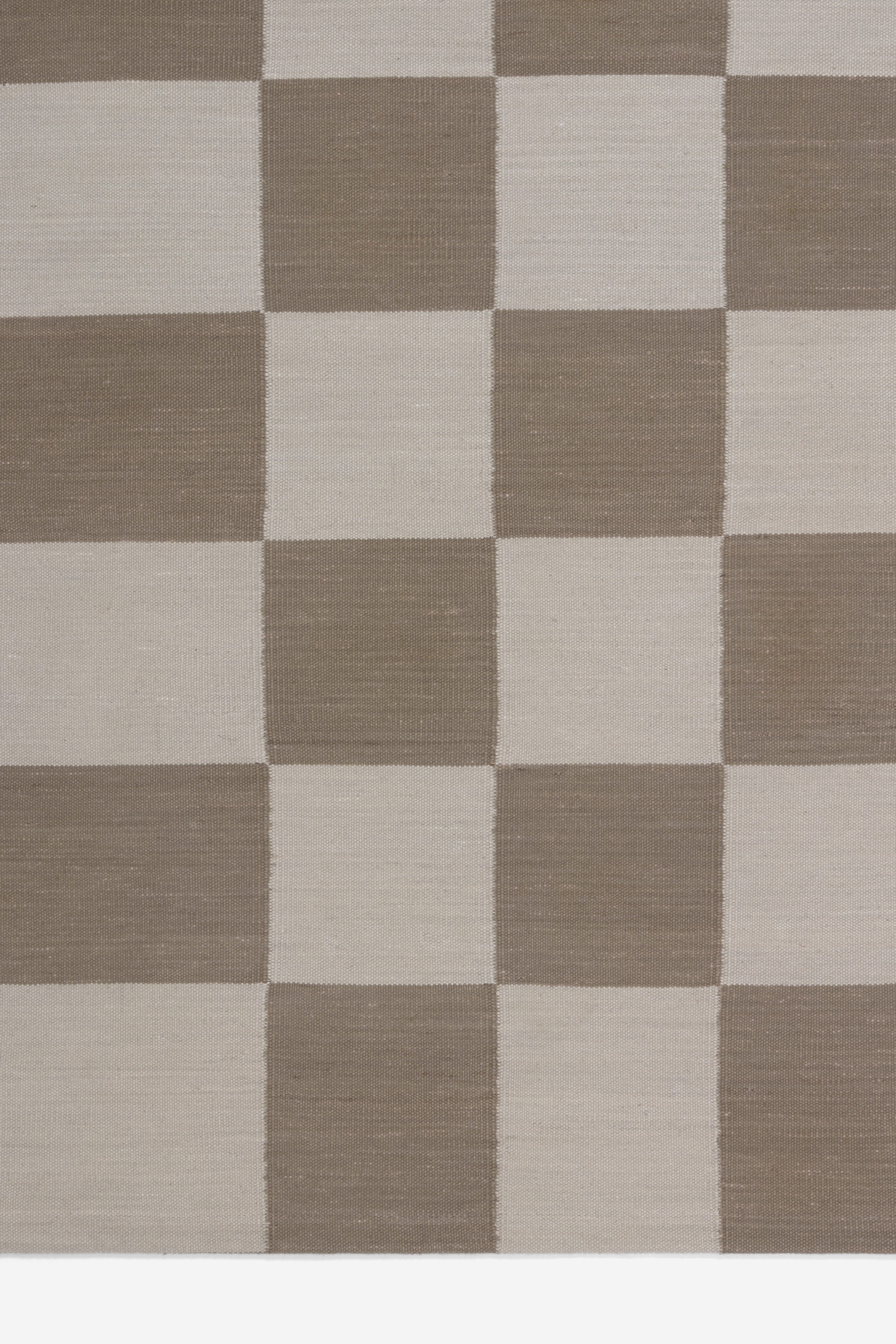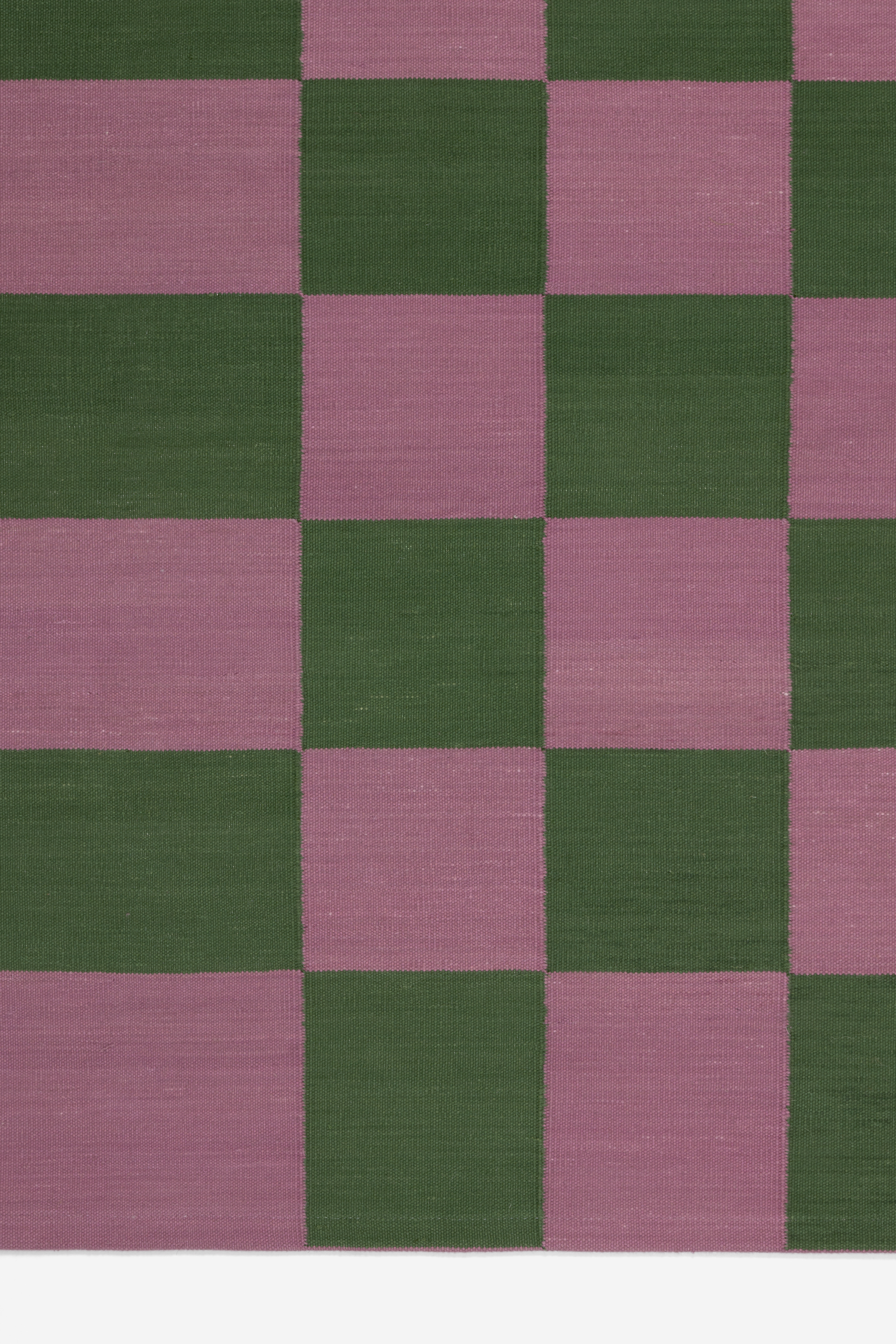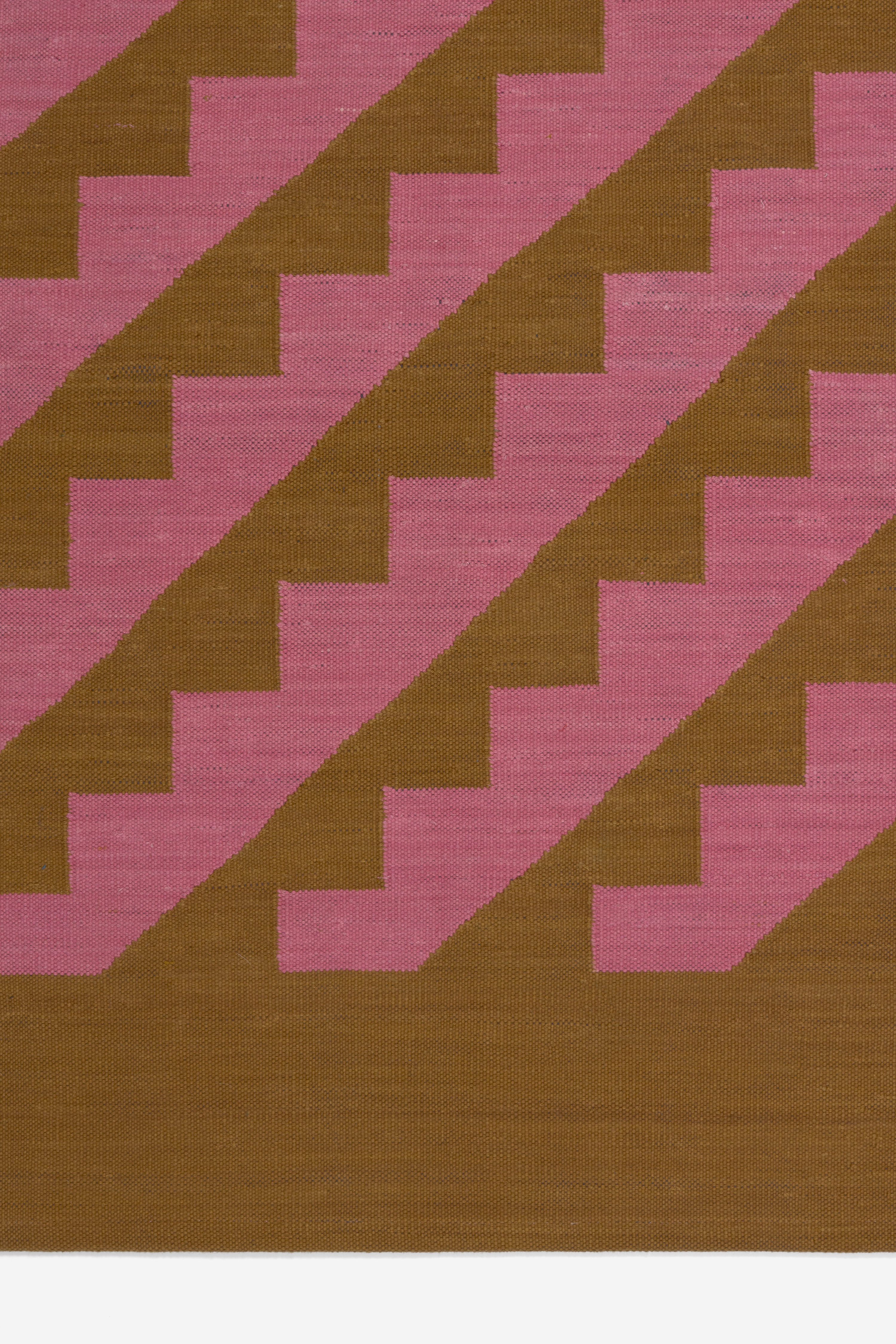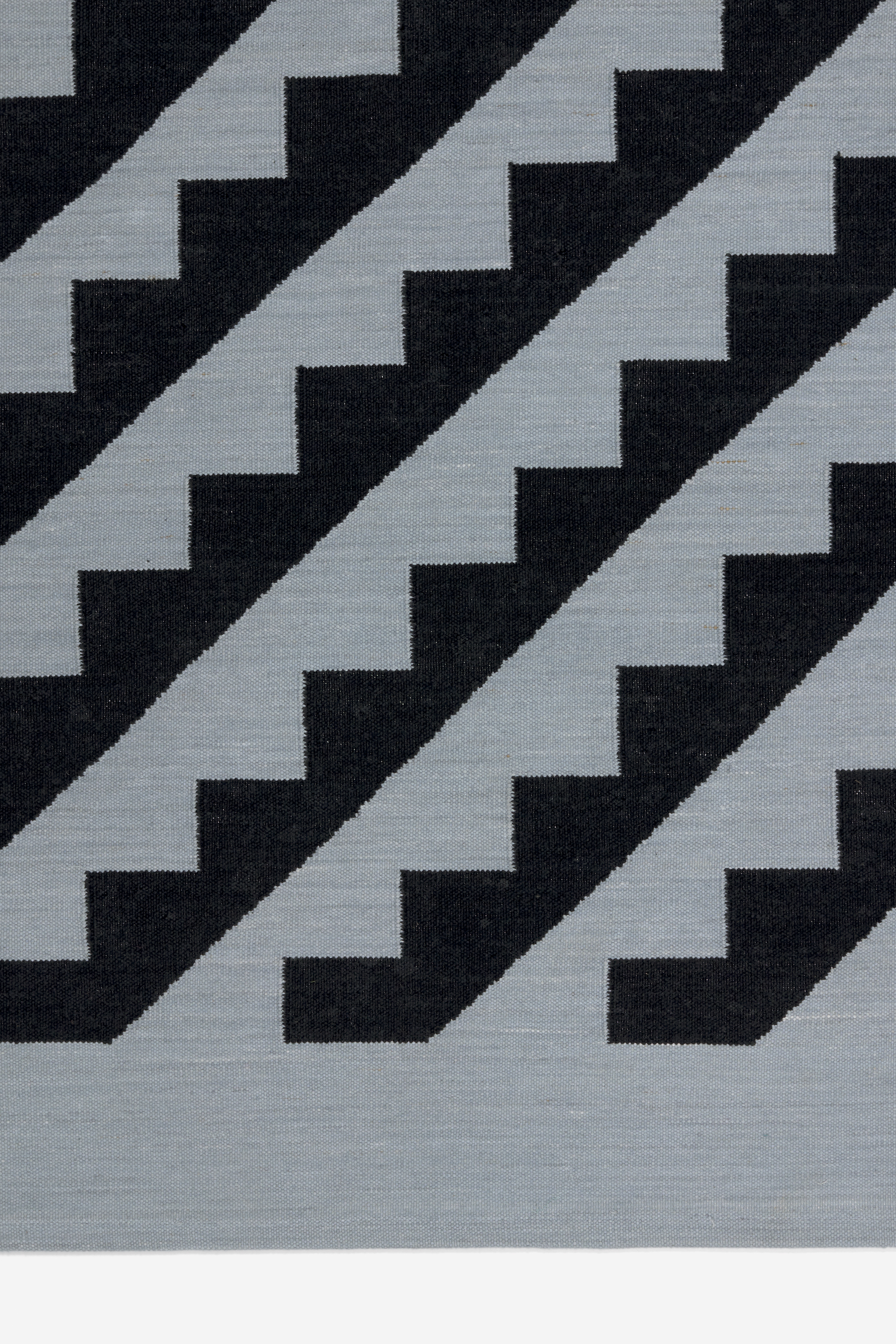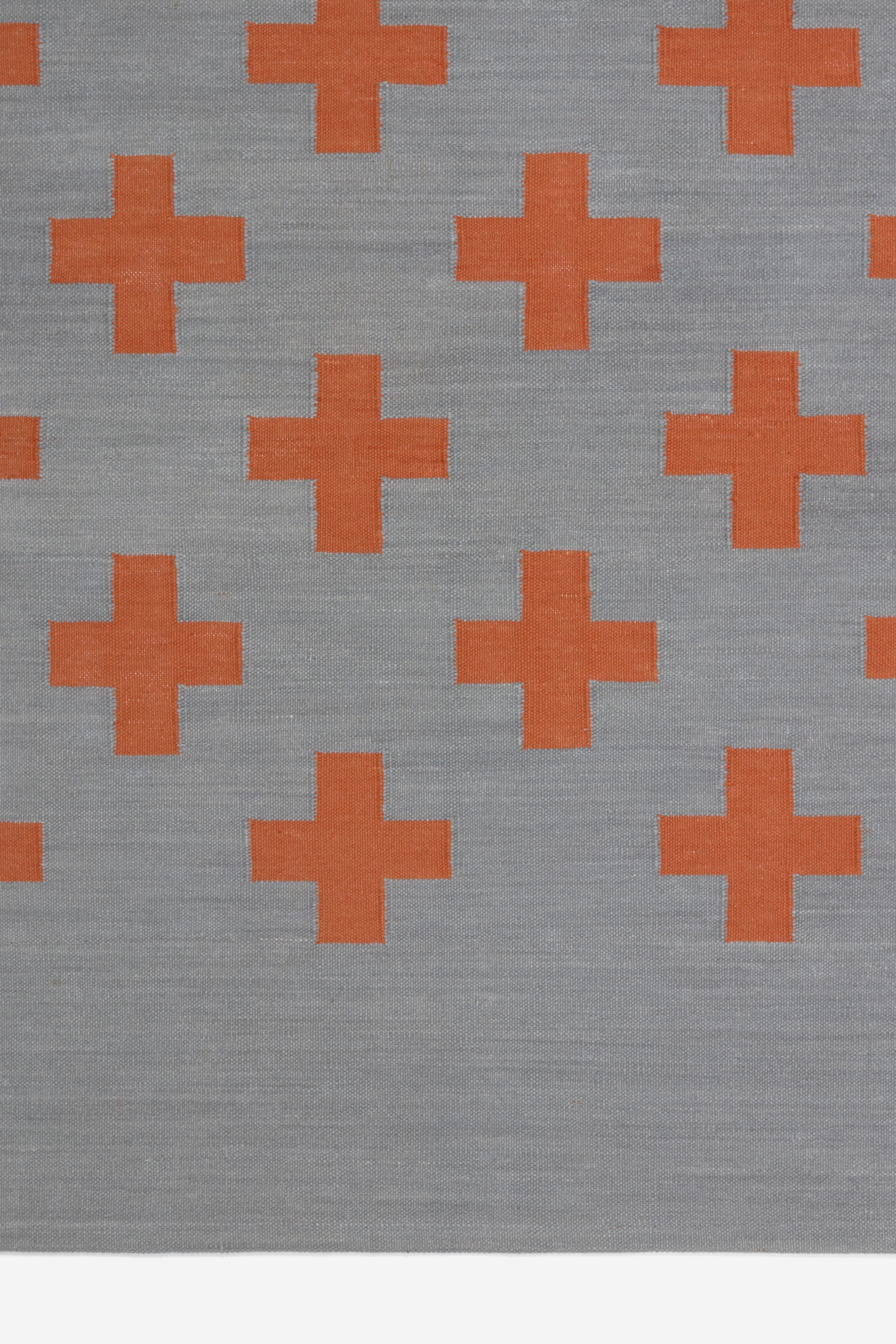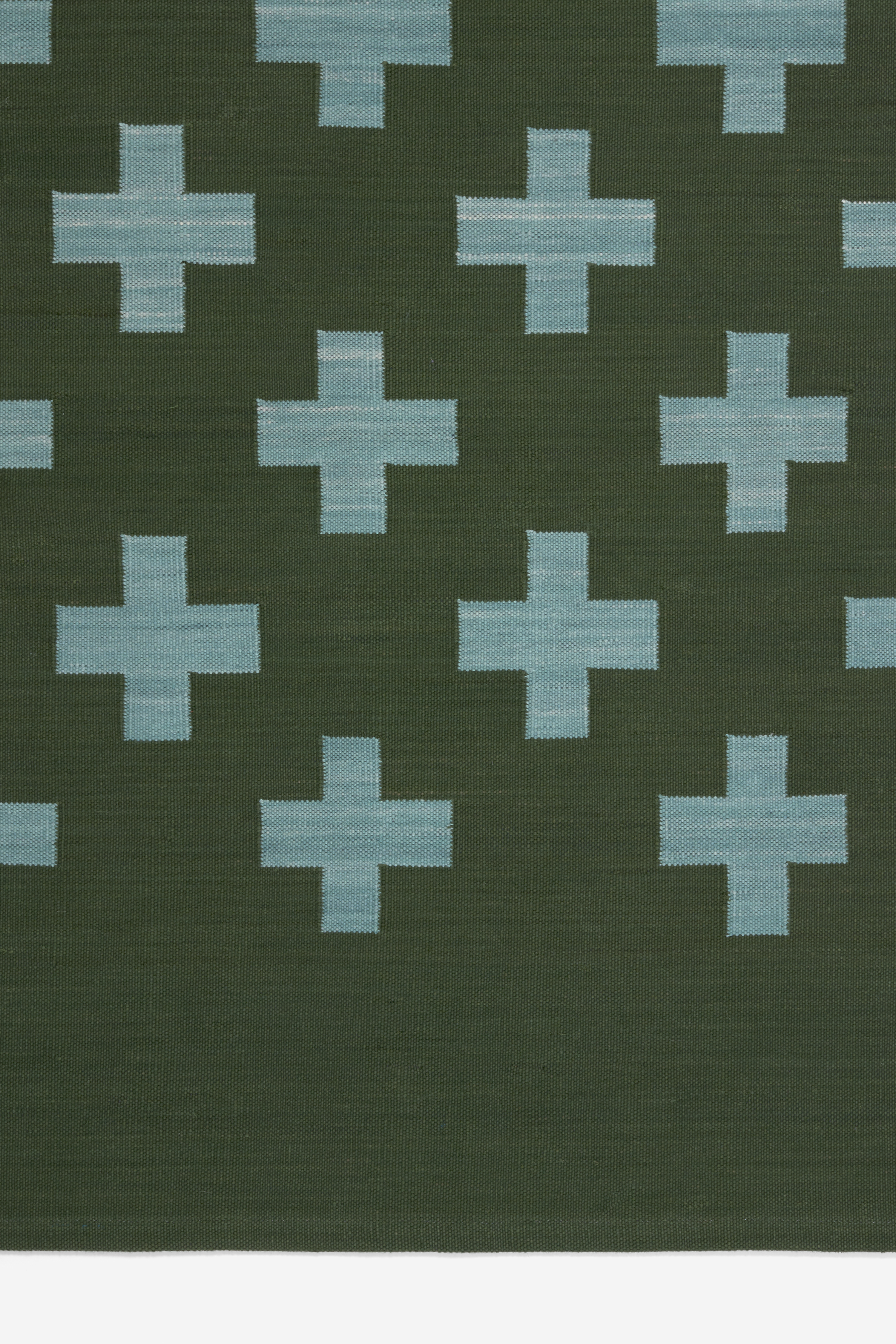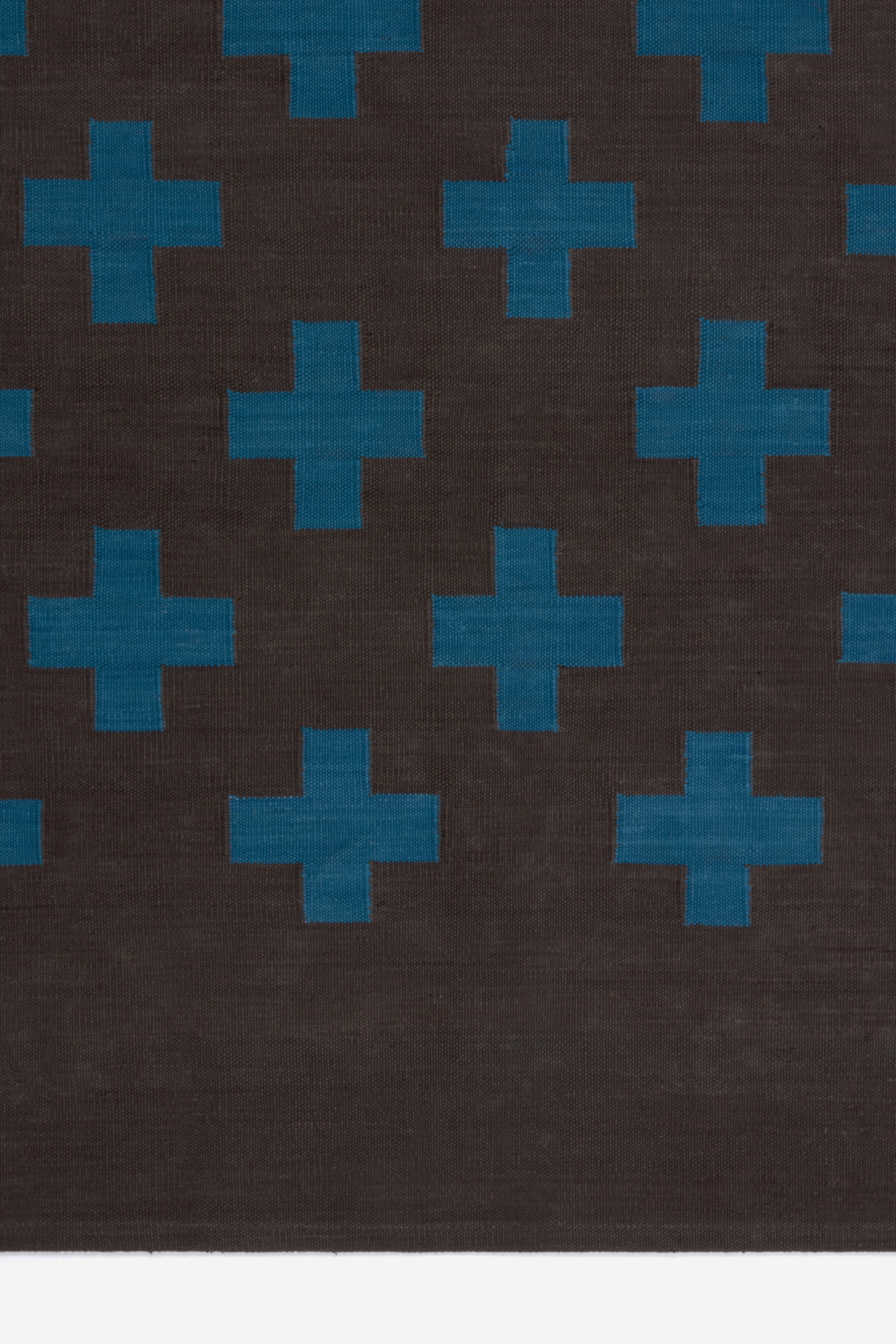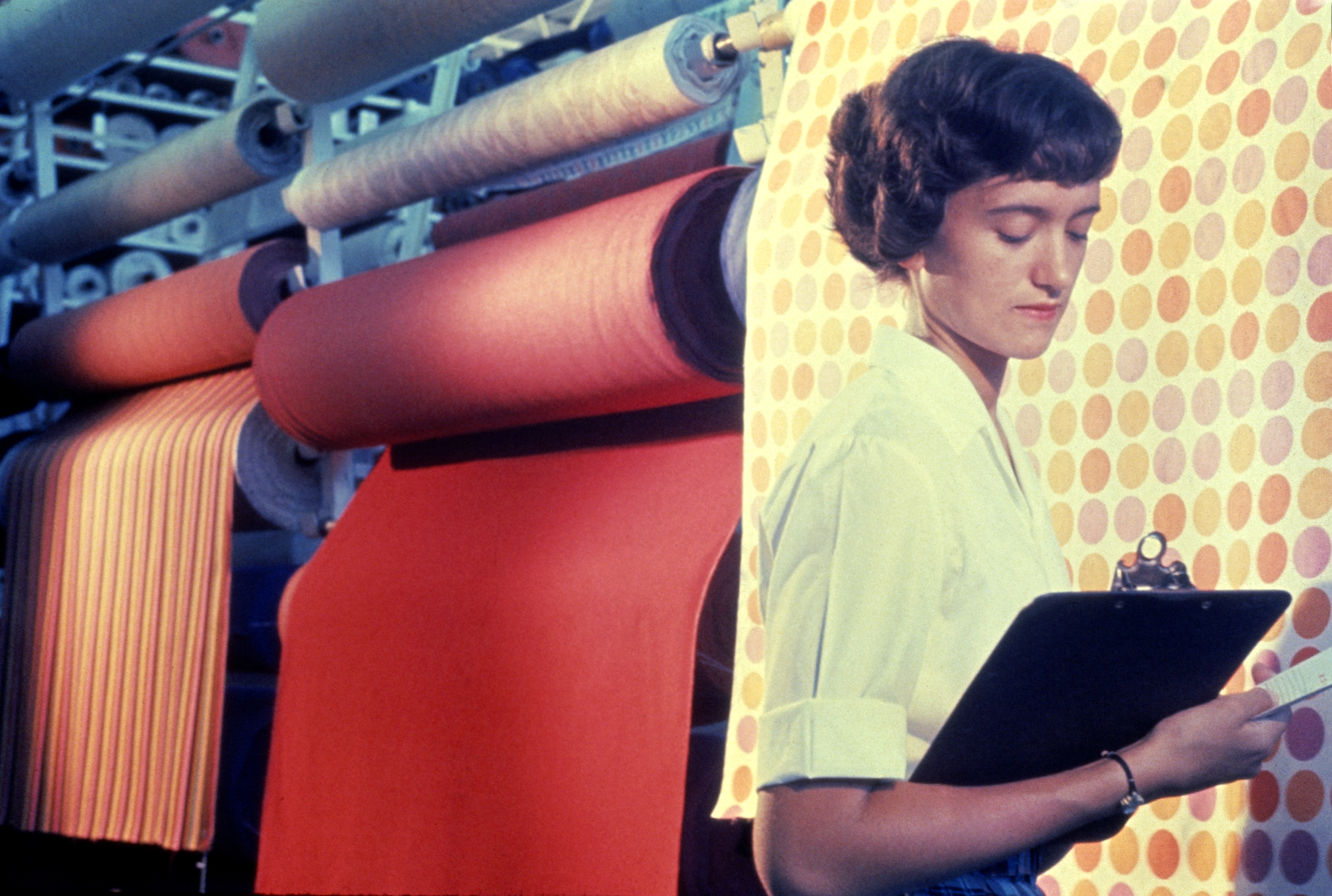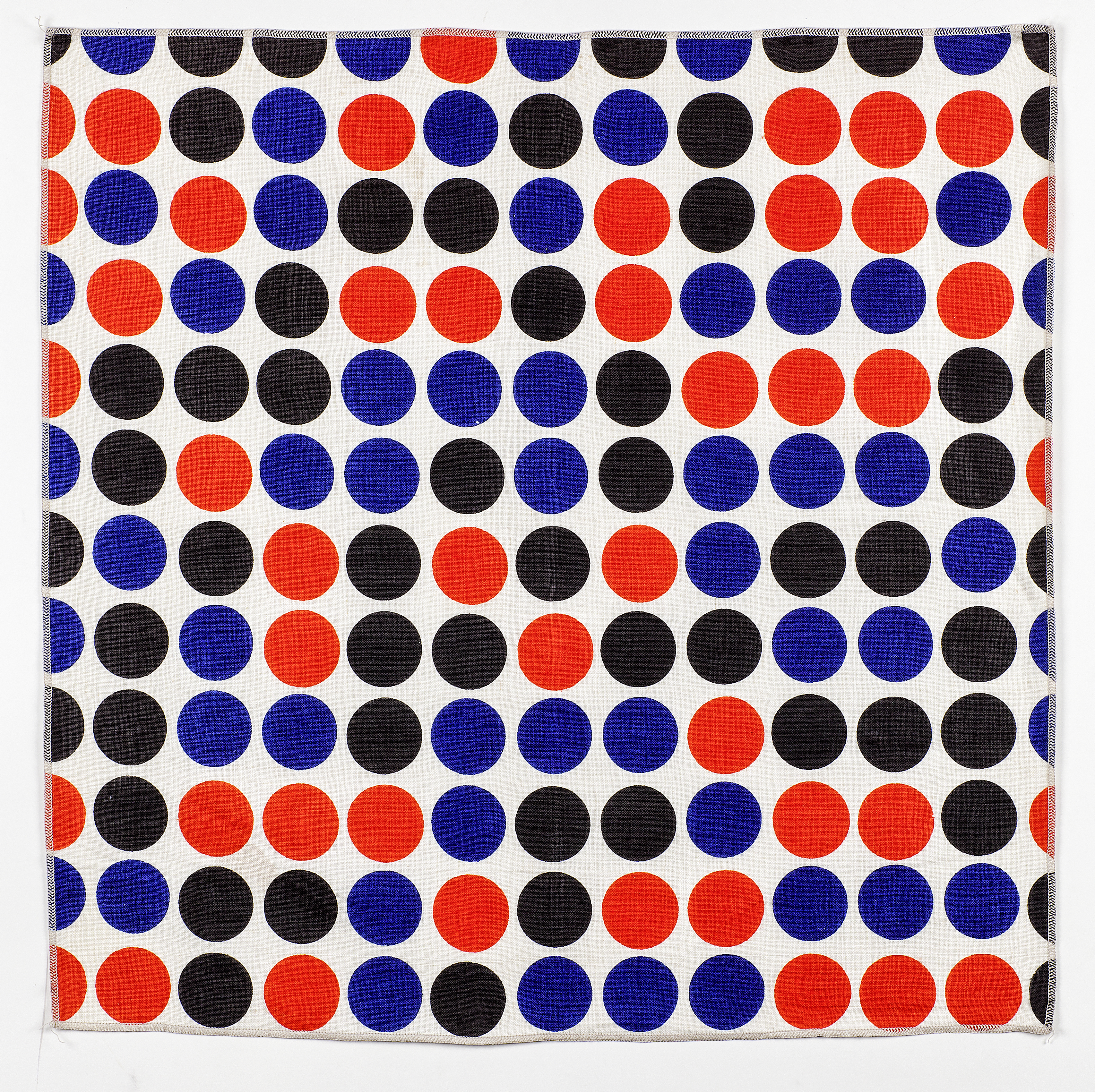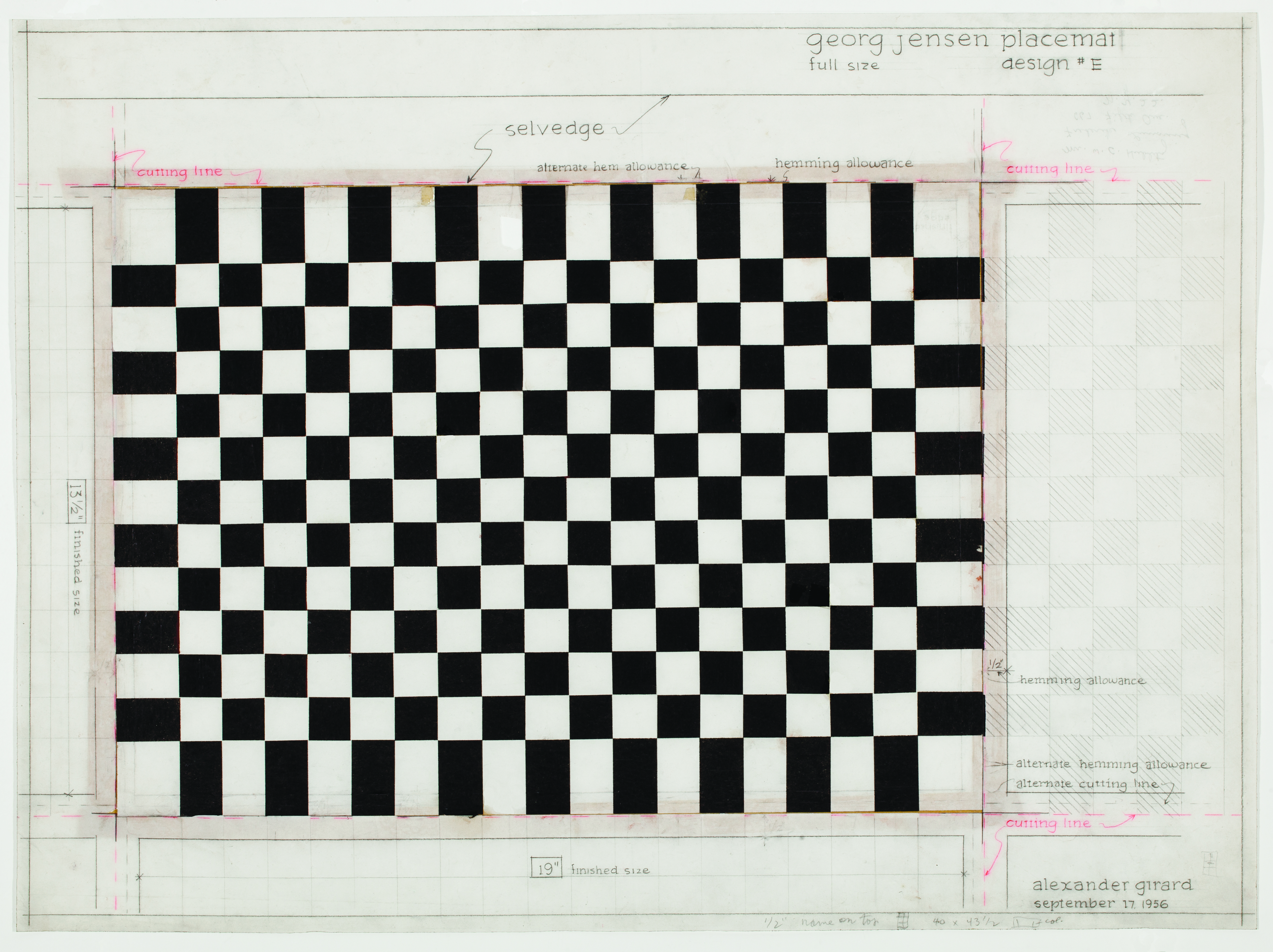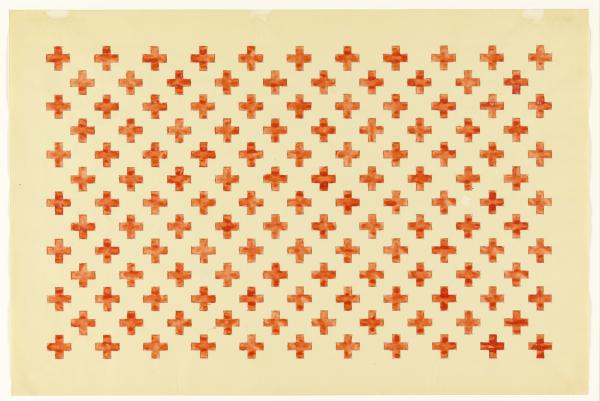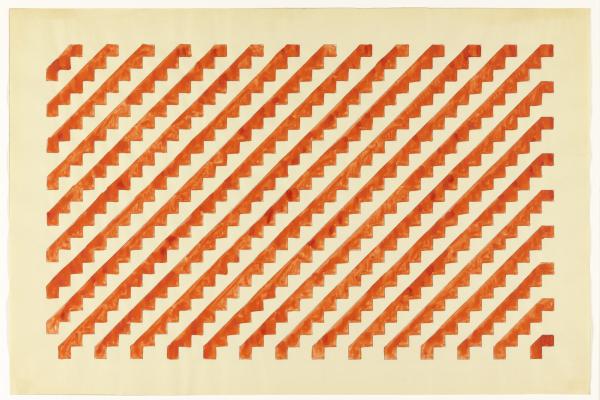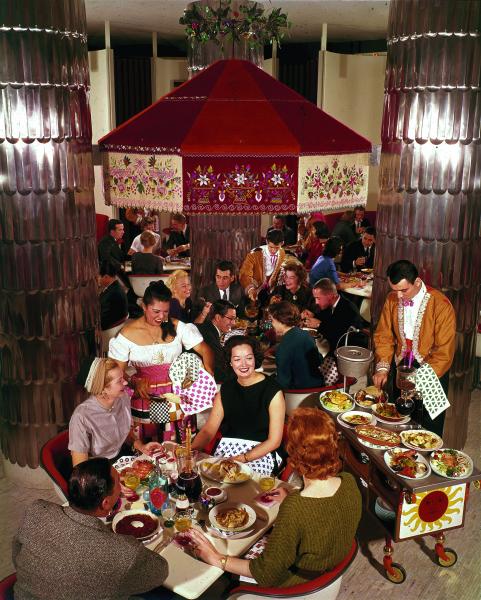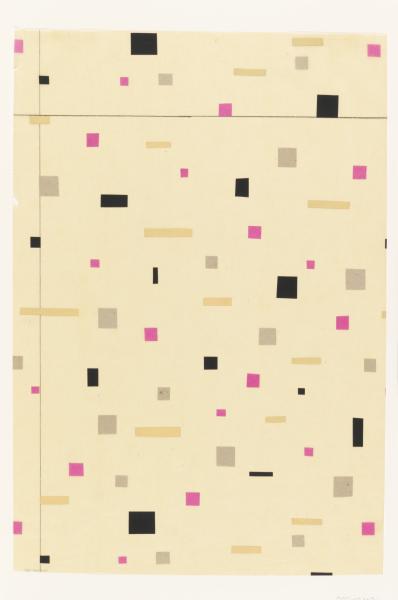This fall, Maharam reissues five designs by Alexander Girard primarily found in the archives of the Cooper Hewitt, Smithsonian Design Museum during a July 2016 visit by Girard Studio and the Maharam Design Studio. A drawing for Circles (1952), an untitled collage for what is now Edges (1962), and watercolor sketches for Plus (1960) and Steps (1960) were all uncovered during this trip. A fifth design, Check (1956), was discovered in the pages of Todd Oldham’s authoritative 2011 monograph, Alexander Girard. Ultimately, the introduction includes two textiles—one of which was never realized during Girard’s lifetime—and, in a first for the ongoing Textiles of the 20th Century™ series, three rugs.
Plus and Steps were originally designed in 1960 as printed napkins for the restaurant La Fonda del Sol, a sweeping masterwork situated on the ground floor of New York City’s Time Life building that showcased Girard’s extensive knowledge of Latin American culture. Having received the commission at Philip Johnson’s suggestion, Girard created a “consistent, total environment,” writes Barbara Hauss in Alexander Girard: A Designer’s Universe, by approaching “the entire project as a Gesamtkunstwerk, devoting equal attention to the largest architectural element and the smallest decorative detail.” Kiera Coffee, in Alexander Girard, elaborates, “As was typical, Girard designed every detail at La Fonda—tables, plates, glasses, bowls, matchstick holders, ceramic tiles, signage, mirrors, uniforms, chandeliers, sink faucets, sugar packets and menus.” Indeed, he designed over eighty different matchbook covers alone.
Flat geometric designs in pure colors unified many of the textiles—from the table settings and curtains to the staff uniforms—creating a cohesive visual experience while reflecting Girard’s pervading interest in universal shapes and symbols. Among these were the simple cross and step motifs that feature in Plus and Steps. In fact, a napkin printed with the Plus pattern spans the central figure’s lap in one of the most iconic photographs taken during La Fonda’s heyday in 1961.
Likewise, Check was designed for Georg Jensen in 1956 as one of eight eclectic table settings that demonstrated Girard’s notion that “matched sets are no fun.” Displayed in the company’s 5th Avenue showroom, the table settings were arranged in a variety of imagined dining scenarios that suggested, in Girard’s words, “some of the things useful, playful or ceremonial that can create various pervading moods at meal times.” Measuring 13.5" tall by 19" wide, “design E”, as the placemat blueprint was labeled, is distinguished by its doublewide border—a defining detail that Check preserves.
A cotton dhurrie construction tightly handwoven in India was chosen to capture the organic, human variation of the source material because of the slight irregularities afforded in color concentration, being yarn dyed, and the subtle imperfections in detailing the motifs, which are inlaid using a tapestry technique. Although Girard produced elaborately tufted rugs for clients like J. Irwin Miller, Aleishall and Kori Girard of Girard Studio felt that their grandfather would have preferred the dhurrie’s more casual feeling for his own home in Santa Fe, New Mexico, where it would have also been more appropriate for the climate and lifestyle. Kori Girard explains, “Woven rugs, carpets, and cushions of all kinds were a huge part of our grandparents’ interior architecture. Sitting on different levels was a common practice and thus the placement of rugs was key. I’m convinced that a large part of why they wanted to move to New Mexico was a deep appreciation for the graphic woven textiles of the Navajo people. These, along with rugs from all over the world, were part of their personal collection.”
In transforming these designs into rugs, the Maharam Design Studio was careful to keep the composition and proportion of the designs intact even as the scale increased. The rugs are available in two set sizes—6' x 9' and roughly 8' x 10'—and three carefully chosen color combinations. For Check, the studio referenced Checker, one of 17,000 designs Girard created as part of his complete visual overhaul of Braniff Airlines in 1965, (reissued by Maharam in 2001), while for Plus and Steps, colors were pulled from previous duotone pairings. Girard’s chromatic signature is well represented in custom-dyed shades of pink, magenta, ochre, sepia, raw umber, emerald, turquoise, and sky blue, while Steps 001 replicates the crimson and ivory washes of the original watercolor sketch.
In delving into the Cooper Hewitt’s archives, the Design Studio sought textiles that are perhaps less recognizably Girard, but that instead expressed his focus on simple, timeless and useful design. During his tenure as the founding director of Herman Miller’s textile division from 1952 until 1973, Girard spoke of his desire to create “staples” and often gravitated towards basic geometric forms for their enduring quality. In fact, while these five new reeditions are all grounded in the specificity of archival sources, it’s important to note that nearly all of these motifs recurred not only in Girard’s work, but also throughout time and culture. According to Girard Studio:
Girard absorbed the world around him through technical, decorative and emotional lenses. Throughout his long and varied career, Girard created his own graphic visual language, extracting insight from the larger global archetypes and ancient motifs that have existed for centuries. For example, one can find many references of the abiding pattern of checkers in a wide span of cultures from the rugs of the Navajo to the textiles of the Ivory Coast and the terrazzo floors of Italy to the woven baskets of Borneo. In his choice of color, scale and construction, Girard birthed his own collection of unique checked patterns that he would go on to use in many projects in a myriad of ways. This ability to interpret in countless iterations themes that may have otherwise seemed staid or trite helped develop a body of work that continues to remain vital and important as ever.
Because the 1962 collage for Edges was designed in perfect repeat and with color distributed in such a way that would easily accommodate weft striping, the design studio speculates that it was intended as a woven textile, although it was never produced during his lifetime. Featuring petite square and rectangular strips of matte and metallic paper loosely scattered across a small area, the collage’s simple pattern is transformed by Girard’s genius for color. Color 001 duplicates the original combination of black, silver, mustard, and fuchsia motifs on a parchment ground, while the other options are based on existing multicolor Girard patterns. This is the second Girard pattern, after Quatrefoil, that incorporates a metallic yarn.
Circles, on the other hand, was designed in 1952 during Girard’s first year at Herman Miller and printed on linen, rayon, and possibly other materials as a drapery, partition, and upholstery textile. Four of the colors recreate those from Girard’s time, including combinations of black, scarlet, and specially developed ultramarine on ivory; orange, crimson, and purple on ivory; pink, yellow, and tan on ecru; and emerald, sepia, and ivory on taupe. In translating the colors, the Maharam Design Studio observed that Girard did not strive for uniformity, but instead welcomed various levels of contrast and saturation across the palette.
A midscale pattern, Circles is unusual in that it does not conform to a grid. Instead, each motif is subtly offset. As with Edges, the original scale is maintained while in a first for Maharam, the dry, organic texture of linen infuses the ground of this jacquard-woven textile.
Maharam has reissued twenty-seven Girard patterns to date as part of its ongoing Textiles of the 20th Century™ collection, which is committed to authentically reproducing the textiles of great designers of the past, including those of Josef Hoffman, George Nelson, and Gio Ponti, among others. Reflecting on these five reeditions, Aleishall Girard Maxon says, “The process of developing new textiles with Maharam is one of technical precision and also emotional instinct. When we discover pieces from the archives that we have not seen before, it’s like a window back into the world as our grandfather envisioned it. Introducing patterns that he intended for textile but for one reason or another were never realized is a great honor and working with Maharam we know the quality of the final offering will always be as considered as the design itself. For us this is paramount.”
Maharam is proud to sponsor the landmark retrospective, Alexander Girard: A Designer’s Universe. Organized by the Vitra Design Museum, the exhibition will open in May 2019 at the Museum of International Folk Art in Santa Fe, where it will be presented through October 2019 alongside the permanent Girard exhibition, Multiple Visions: A Common Bond.
About Alexander Girard
Trained as an architect but proficient in nearly all design disciplines, Alexander Hayden Girard (1907–1993, United States) had a profound impact on 20th-century visual culture. As founding director of Herman Miller’s textile division from its formation in 1952 until 1973, Girard generated more than 300 patterns from his outpost in Santa Fe, New Mexico. Reflecting his love of international folk art and unhampered by contemporary dictums of style and taste, Girard explored wildly different approaches to color, form, pattern, and construction. The resulting body of work is staggering not only in sheer volume and creativity, but due to its fundamental qualities of beauty and usefulness, remains completely relevant today.
Check by Alexander Girard, 1956
Introduction: October 2018
Application: Floors
Content: 100% Cotton
Colors: 3
Circles by Alexander Girard, 1952
Introduction: October 2018
Application: Seating
Content: 47% Cotton, 30% Linen, 23% Solution-Dyed Nylon
Colors: 11
Edges by Alexander Girard, 1962
Introduction: October 2018
Application: Seating
Content: 66% Cotton, 30% Solution-Dyed Nylon, 4% Polyester
Colors: 8
Plus by Alexander Girard, 1960
Introduction: October 2018
Application: Floors
Content: 100% Cotton
Colors: 3
Steps by Alexander Girard, 1960
Introduction: October 2018
Application: Floors
Content: 100% Cotton
Colors: 3
